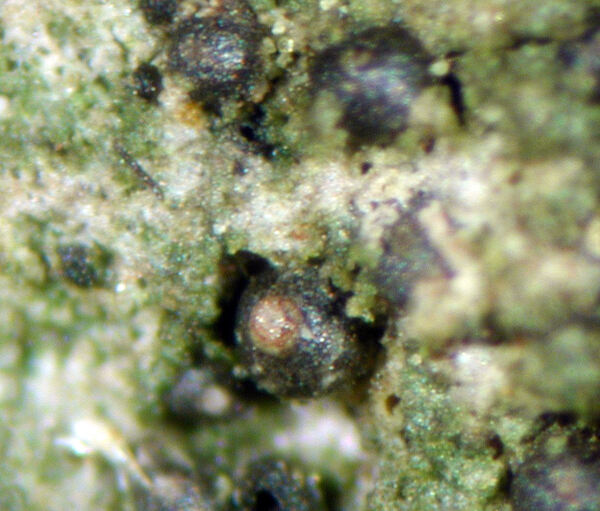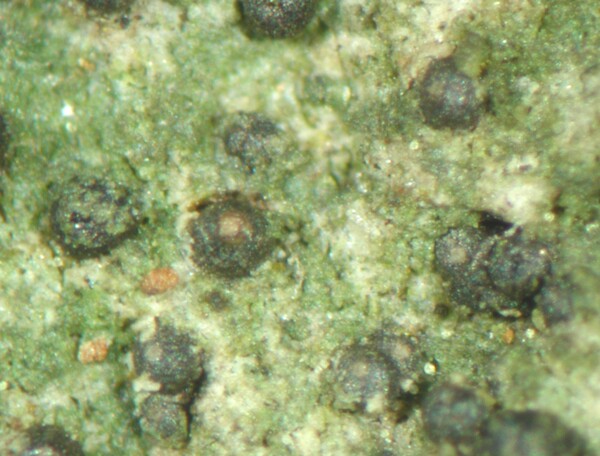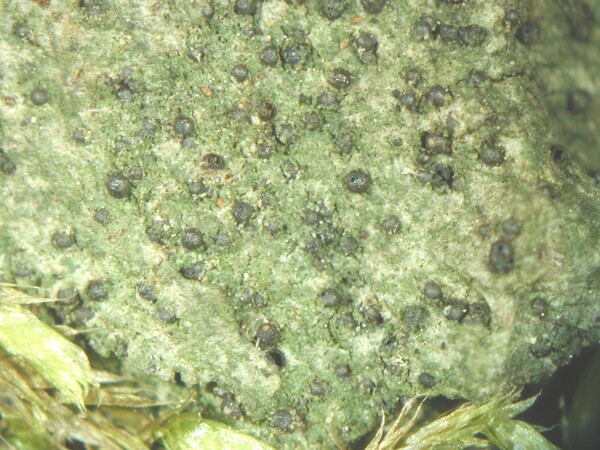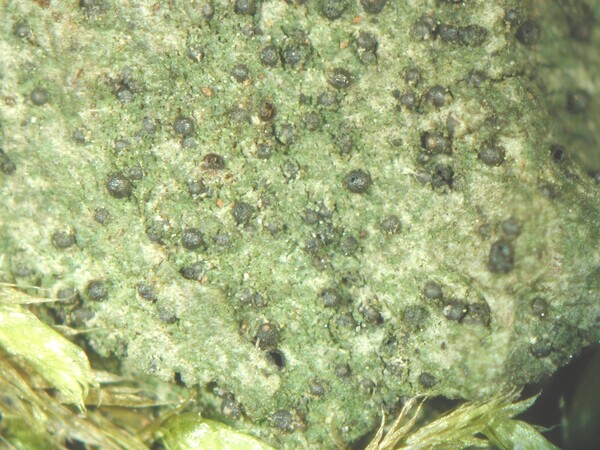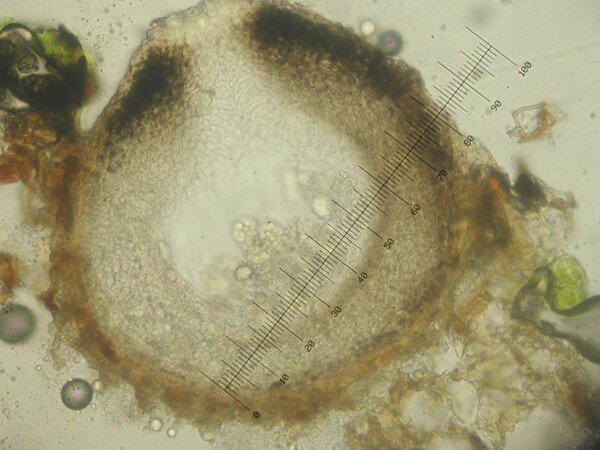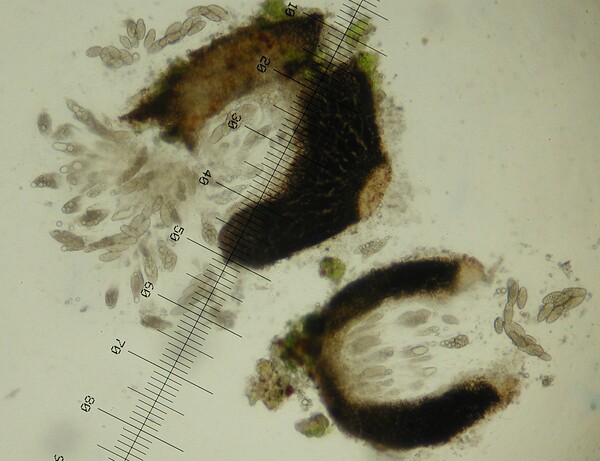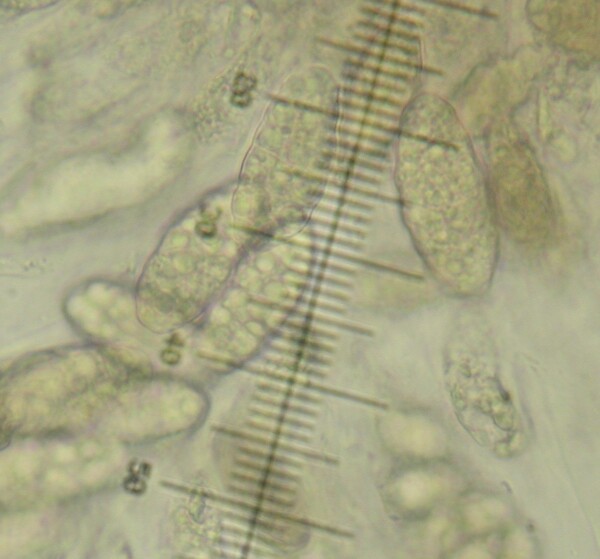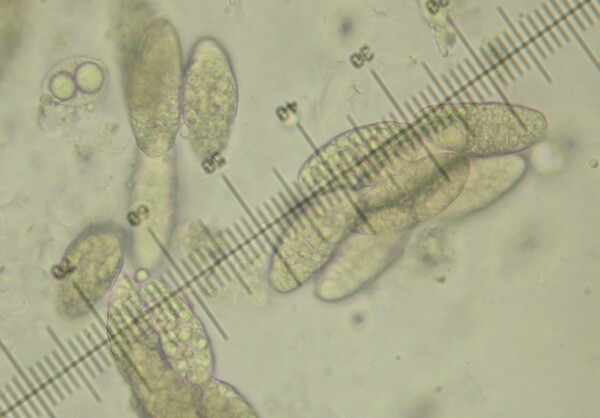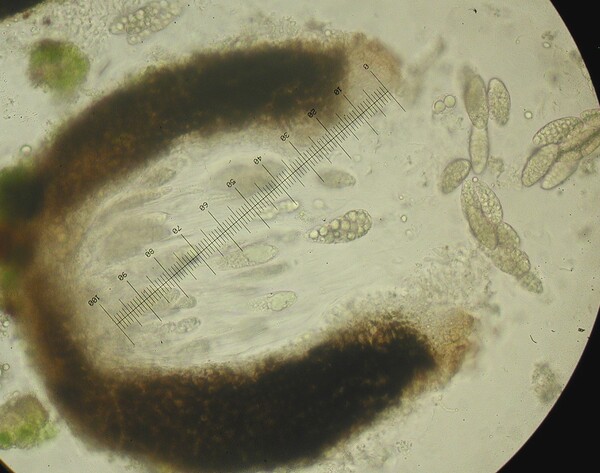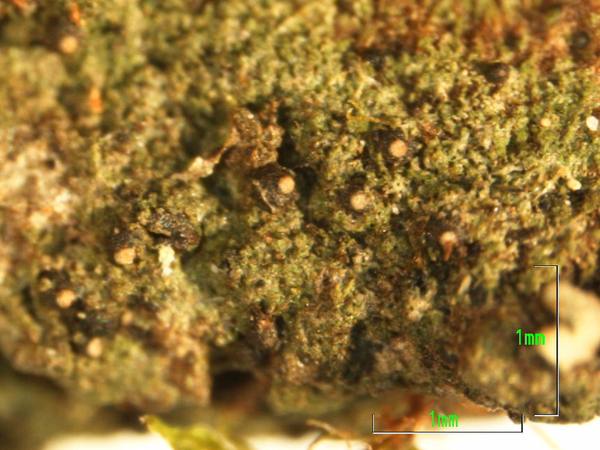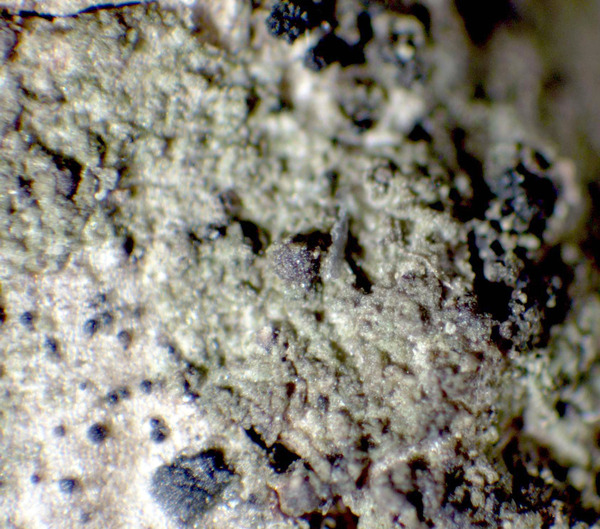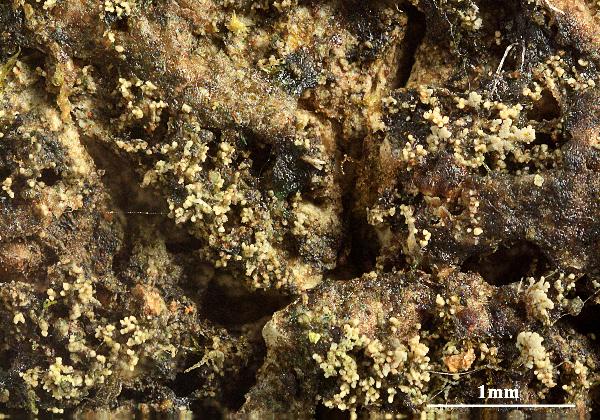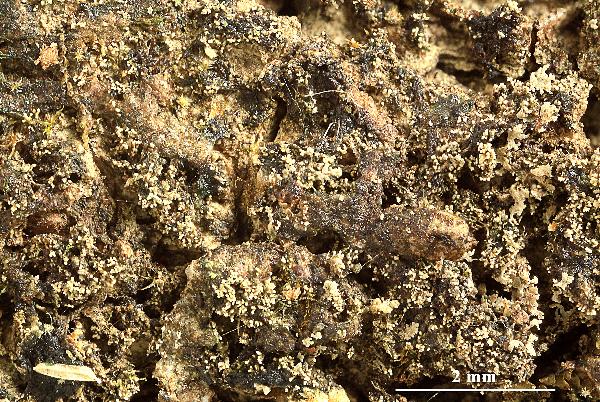Agonimia allobata (Stizenb.) P. James
in Coppins & al., Lichenologist, 24: 366, 1992. Basionym: Verrucaria allobata Stizenb. - Ber. naturw. Ges. St. Gallen: 501, 1882 (1880-1881).
Synonyms: Amphoroblastia allobata (Stizenb.) Servít; Polyblastia allobata (Stizenb.) Zschacke
Description: Thallus crustose, episubstratic, grey-green to brown, slightly uneven and faintly roughened, composed of goniocysts surrounded by hyphae with a sparingly papillate wall. Perithecia 0.1-0.25 mm across (in section), more or less globose, sometimes slightly barrel-shaped, 2/3 immersed to almost entirely superficial, grey-brown when young, later usually black, but paler around the ostiole, the surface smooth, matt. Exciple 2-layered, pigmented in outer part, colourless and of compressed cells within; involucrellum absent; hamathecium of periphysoids which soon dissolve into a poorly differentiated hymenial gel (interascal filaments in mature ascomata lacking). Asci 8-spored, clavate, thin-walled, fissitunicate with a very thin exoascus, surrounded by a hemiamyloid gel. Ascospores muriform, hyaline, ellipsoid, (25-)29-35(-45) x 10-15(-17) μm. Photobiont chlorococcoid. Spot tests: K-, C-, KC-, P-, UV-. Chemistry: without lichen substances.
Growth form: Crustose
Substrata: bark
Photobiont: green algae other than Trentepohlia
Reproductive strategy: mainly sexual
Most common in areas with a humid-warm climate (e.g. most of Tyrrenian Italy)
Commonnes-rarity: (info)
Alpine belt: absent
Subalpine belt: absent
Montane belt: absent
Dry submediterranean belt: very rare
Humid submediterranean belt: very rare
Padanian area: absent
pH of the substrata:
1 2 3 4 5
Solar irradiation:
1 2 3 4 5
Aridity:
1 2 3 4 5
Eutrophication:
1 2 3 4 5
Poleotolerance:
0 1 2 3
Altitudinal distribution:
1 2 3 4 5 6
Rarity
absent
extremely rare
very rare
rare
rather rare
rather common
common
very common
extremely common
Loading data...
Occurrence data
Predictive map
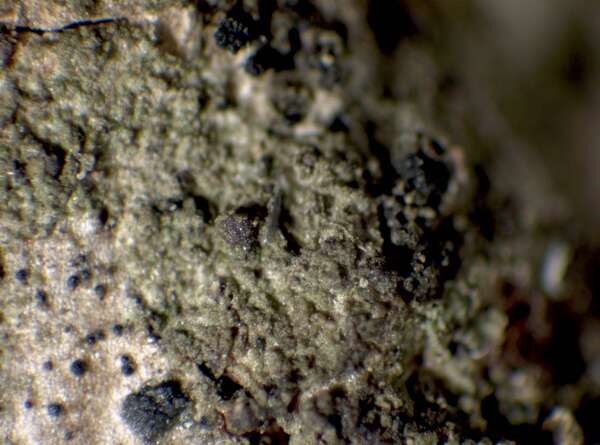
P.L. Nimis; Owner: Department of Life Sciences, University of Trieste
Herbarium: TSB (17804)
2001/11/28
Growth form: Crustose
Substrata: bark
Photobiont: green algae other than Trentepohlia
Reproductive strategy: mainly sexual
Most common in areas with a humid-warm climate (e.g. most of Tyrrenian Italy)
Commonnes-rarity: (info)
Alpine belt: absent
Subalpine belt: absent
Montane belt: absent
Dry submediterranean belt: very rare
Humid submediterranean belt: very rare
Padanian area: absent
pH of the substrata:
| 1 | 2 | 3 | 4 | 5 |
Solar irradiation:
| 1 | 2 | 3 | 4 | 5 |
Aridity:
| 1 | 2 | 3 | 4 | 5 |
Eutrophication:
| 1 | 2 | 3 | 4 | 5 |
Poleotolerance:
| 0 | 1 | 2 | 3 |
Altitudinal distribution:
| 1 | 2 | 3 | 4 | 5 | 6 |
Rarity
absent
extremely rare
very rare
rare
rather rare
rather common
common
very common
extremely common
Loading data...
Occurrence data
Predictive map



